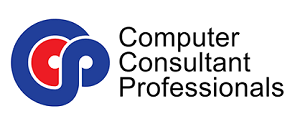As a business owner, you must always look for innovative methods to increase staff efficiency without losing job quality. It is feasible with the help of a well-planned and implemented personnel management strategy. First and foremost, what is an employee engagement solution, and how can employee management software aid growth? This post will go over just that and workforce management options.
What is Employee Engagement?
Employee engagement is inextricably linked to worker productivity enhancement. It is the practice of measuring and enhancing your employees’ performance using metrics. Human resource management, performance and training management, data gathering, recruiting, budgeting, forecasting, scheduling, and analytics are all important components of maintaining a productive staff. Workforce management solutions are used by businesses to acquire these vital insights into their company data.
Many firms still see employee management as a tool for recruiting and retaining employees, but it is much more. Human error is reduced by workforce management solutions that are totally automated and metric-based. Workforce management systems also provide a systematic approach to enhancing team and team member productivity, resulting in a greater ROI, happier employees, and more delighted customers.
Why do you require an employee management system?
Employee management systems may help you streamline your company’s procedures, increase staff productivity, and cut expenses. You may acquire useful insights into your business KPIs and use them to plan and execute future business choices. Additionally, Employee management software or solutions aid in the understanding and tracking of individual employee productivity. This may be used to optimize task distribution and reward more productive personnel.
Also, as more workers work from home, workforce management software may help with absence tracking, PTO tracking, and producing answers for employees and supervisors. Employee Management can be done through or by taking the help of employee productivity software.
Data collection-Data collection is the starting point of workforce management. Until you have the necessary data, you can’t compare your employee management levels or analyze your company’s performance.
Forecasting and budgeting– Once you have all the necessary information about your projects and employees, you can make forecasts. Employee engagement solutions can help with efficiency and staffing due to advanced analytics and capabilities
Staff scheduling– Availability. Skills and eligibility data are combined with forecast and historical data to inform scheduling and staffing levels, even during current capacity constraints.
Attendance and timekeeping-Missed attendances, late arrivals, and breaks can be identified by employee engagement solutions. It also includes tracking information which allows you to see what your employees are doing at a particular interval of time. This feature is handy in today’s Environment.
Leave planning- Employees can use employee management software to track and request paid time off. Employees can also trade shifts and be more flexible while reducing absences and losses.
Advantage of Employee Engagement solution:
Boosting Employee satisfaction:
Workforce management software allows employees to monitor and amend their schedules, confirm shifts, request leaves, and simply log in and out. When employees accomplish more for themselves, they feel more powerful and pleased.
Human Resource Management:(HRM)
The workforce management system incorporates data from the human resources management system, such as employee files, contractors, and seasonal labor.
Save Money:
An integrated workplace management software saves more than it costs due to decreased license fees and IT expenditures. It indicates increased income for the company due to direct and indirect cost reductions.
Get Valuable Insights:
The workforce management system can contain AI so that its analytical tools can forecast personnel requirements such as scheduling, reimbursement, and any other swings in demand and availability, allowing for better-informed decisions.
Adaptability:
Workforce management software evolves and adapts with your business to provide visibility and flexibility. Furthermore, management systems allow you to prepare for the future by combining previous and present data.
Security:
Workforce management solutions incorporate several security measures, such as multi-factor authentication and data encryption. It helps keep important employee and corporate data out of the hands of hackers. Insider risks are also protected by workforce management systems.
Centralized solution:
Workforce management systems collect and analyze all data to discover areas for development, giving a centralized solution for the entire enterprise.
Workforce engagement tools and software:
Managing a workforce is a difficult endeavor. It entails keeping track of a number of moving pieces, including money, staff, and scheduling. Most businesses choose to invest in a third-party solution or software that can execute workforce management and incorporate it into regular company operations.
Applicant monitoring systems, which may help you anticipate recruiting patterns in the firm, are common HR elements in workforce management applications. Workforce management software may assist your firm to expedite the process while also delivering useful insights into your staff based on data and analytics.

